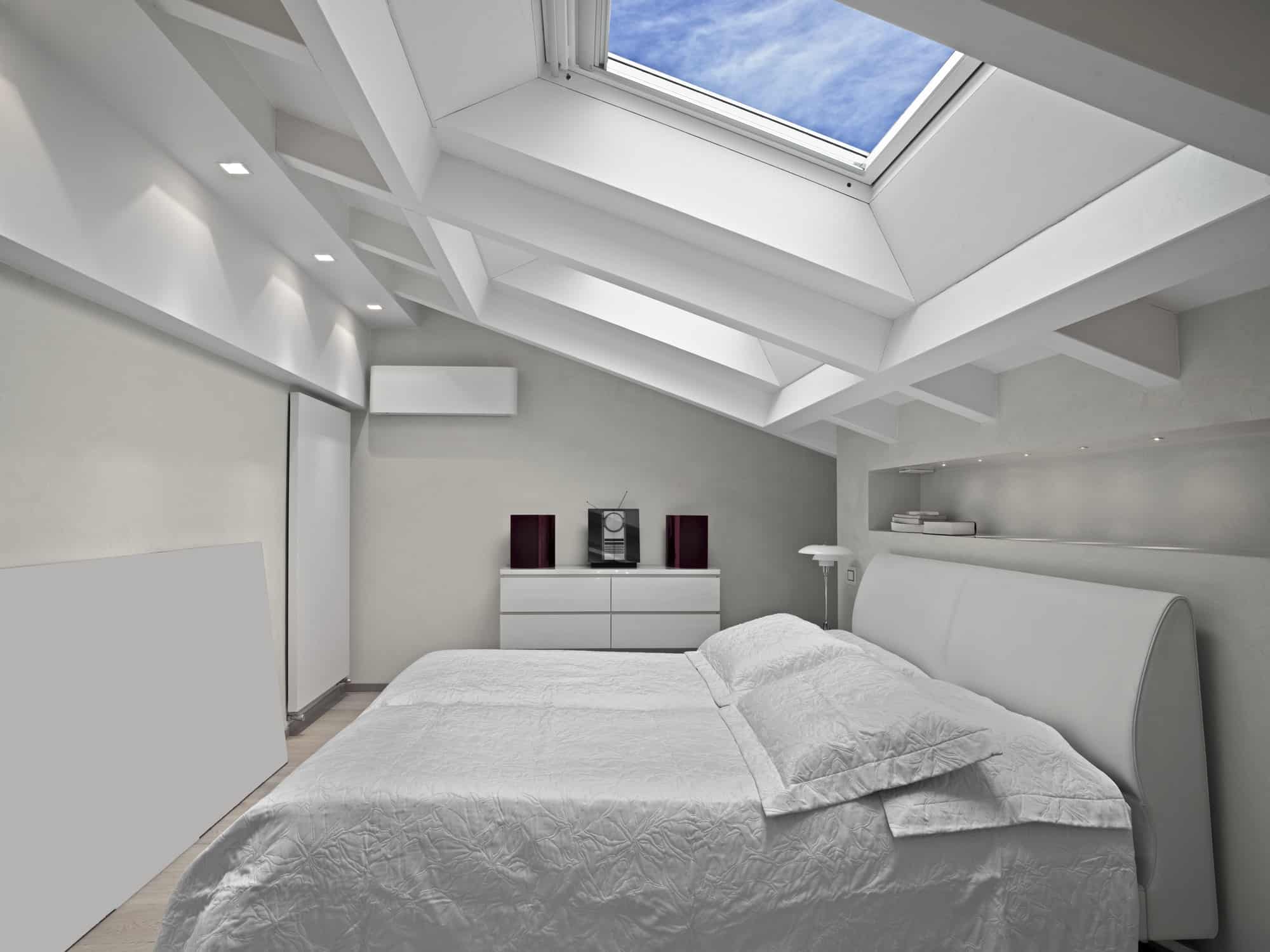What’s the Best Approach to Installing a Skylight in a Dark Hallway?

A dim, dreary hallway can leave your house feeling cramped, unwelcoming, and somber. This is especially true if the hallway lacks any windows or natural light sources. So, what’s the solution? Introducing the innovative, space-friendly design of skylights. Skylights will fill your hallway with natural sunlight, making it a bright, inviting space. In the following sections, we will guide you through the best approaches to installing a skylight in a dark hallway.
Choosing the Right Skylight Design
Before you start the installation process, you need to understand the different designs of skylights available. In essence, skylights, also known as roof windows, are a design feature that allows natural light to enter interior spaces that would otherwise be dark. The light they provide is not only bright but also free and infinite, as it comes directly from the sun.
A lire également : How to Choose the Right Smart Thermostat for Your Home’s HVAC System?
The design of a skylight varies depending on the space available, the type of roof, and the amount of light desired. Fixed skylights are the most common type. They are sealed to the roof and do not open. This design is best for hallways as they typically do not require ventilation.
Another option is the tubular skylight, also known as a solar tunnel. Solar tunnels are compact and easy to install. They use reflective tubes to direct sunlight from the roof to the interior space. This design works best in smaller spaces like hallways.
Sujet a lire : What Are the Best Vintage Decor Elements for a Retro Game Room?
Velux, a well-known brand in the industry, provides a range of skylight designs to choose from. From manual venting skylights to solar powered fresh air skylights, Velux ensures there’s a design for every need.
Assessing the Space and Installation Area
Before installing your skylight, it’s crucial to assess the space and the installation area in your hallway. The key elements to consider include your roof’s design, the hallway’s size, and the location where the skylight will be installed.
First, look at your roof’s design and material. Is it a flat roof or a pitched one? Is it made of shingles, tiles, or metal? Different skylight models are designed for different types of roofs, so understanding your roof is critical to the selection process.
Next, consider the size of your hallway. Narrow hallways might benefit from tubular skylights, while wider ones could accommodate larger, fixed skylights.
Lastly, identify the exact location for the skylight installation. The place should be free of any obstructions like electrical wiring or plumbing lines. Moreover, it should ideally be a spot where the sun shines brightly for most of the day.
Planning Your Skylight Installation
Proper planning is crucial to a successful skylight installation. Start by determining the skylight’s size. The size largely depends on the hallway’s size and the amount of light you want to let in. A rule of thumb is that the skylight size should not exceed 5% of the hallway’s floor area, unless the room has few windows.
Next, consider the position of the sun. The best location for your skylight is on the roof that faces north or south. A north-facing skylight provides cool, consistent illumination, while a south-facing one allows more solar heat gain.
When planning the installation, also consider adding a solar heat control film to the skylight. This film can help you control the amount of heat and light entering the hallway.
Hiring a Professional or DIY?
Should you hire a professional, or should you embark on a DIY adventure to install your skylight? Both options have their pros and cons.
Professional installers have the experience and the right tools to ensure your skylight is installed correctly and safely. They will also be able to advise you on the best skylight design for your hallway. Hiring a professional might be more expensive, but it saves you time and guarantees a job well done.
On the other hand, if you are handy and enjoy DIY projects, installing a skylight can be a rewarding task. It’s cheaper, and you have the freedom to work at your own pace. However, remember that installing a skylight involves cutting a hole in your roof, which can be risky if not done correctly. Before deciding on a DIY project, ensure you have the correct tools and safety equipment.
Ensuring Proper Maintenance of Your Skylight
Once your skylight is installed, proper maintenance is essential to ensure its longevity. Regular checks for leaks, cracks, or condensation are crucial. It’s also important to clean the skylight regularly to keep it clear of dust and dirt that could limit sunlight penetration.
In case of a fixed skylight, consider installing a skylight shade to control the amount of light entering the hallway. This will also help prevent any potential damage caused by UV rays.
Remember, your skylight is more than just a window. It’s a source of natural light that can transform your hallway from dark and dull to bright and inviting. With the right approach, your skylight installation will be a breeze, and you will enjoy a light-filled hallway that adds character to your house.
Understanding the Potential for a Tax Credit
Installing a skylight is not just about adding natural light to your hallway; it can also be a financially savvy move. Skylights, particularly solar-powered ones, can help you reduce your energy bill and potentially qualify for a tax credit.
The federal government offers a tax credit for homeowners who install energy-efficient products in their homes, including skylights. The Energy Star program, for example, provides a tax credit for qualifying products. Solar-powered skylights and sun tunnels, like the ones offered by Velux, are typically eligible for this credit.
When planning your skylight installation, research the potential for a tax credit. Check the latest federal and state guidelines and consult with a tax advisor if required. Keep all invoices and certification statements related to your skylight installation, as you will need these documents when filing your tax return.
Remember, to qualify for a tax credit, the skylight must meet certain energy efficiency requirements. For instance, a skylight with a low U-Factor (a measure of heat loss) and a high Solar Heat Gain Coefficient (a measure of solar heat gain) is more likely to qualify.
Selecting a Skylight Design for Each Room
While our focus is on hallways, it’s worth noting that skylights can be a great addition to any room in your house. From the living room to the dining room, a skylight can add natural light and transform the space.
Choosing the right skylight design for each room will depend on the room’s function and the amount of light desired. In a living room, for instance, a venting skylight might be a good option. It can provide natural light and allow for ventilation, making the space feel airy and fresh.
In a dining room, a fixed skylight might be more suitable. It provides consistent light, which can enhance the ambiance during meals. A sun tunnel can be a great option for small spaces like bathrooms or closets, where a traditional skylight may not fit.
Whether it’s a night light for your hallway or a solar powered skylight for your living room, there’s a design for every need. It’s highly recommend consulting with a professional installer or a trusted brand like Velux to guide you through the selection process.
Wrapping Up: Let the Light In
In conclusion, installing a skylight in a dark hallway can truly transform your home. It will not only brighten up the space with natural light but can also make it feel larger and more inviting. From choosing the right skylight design to understanding the installation area and planning your installation, every step plays a crucial role in the success of your project.
It’s important to weigh the pros and cons of hiring a professional versus undertaking the project as a DIY. Depending on your comfort level, skills, and budget, either option can be suitable. Keep in mind the potential for a tax credit when installing solar-powered skylights and remember the importance of proper maintenance to ensure the longevity of your skylight.
Whether it’s a hallway, a living room, a dining room, or a bathroom, skylights can add a touch of magic to any room. So let the light in, and transform your house into a bright, welcoming home.
